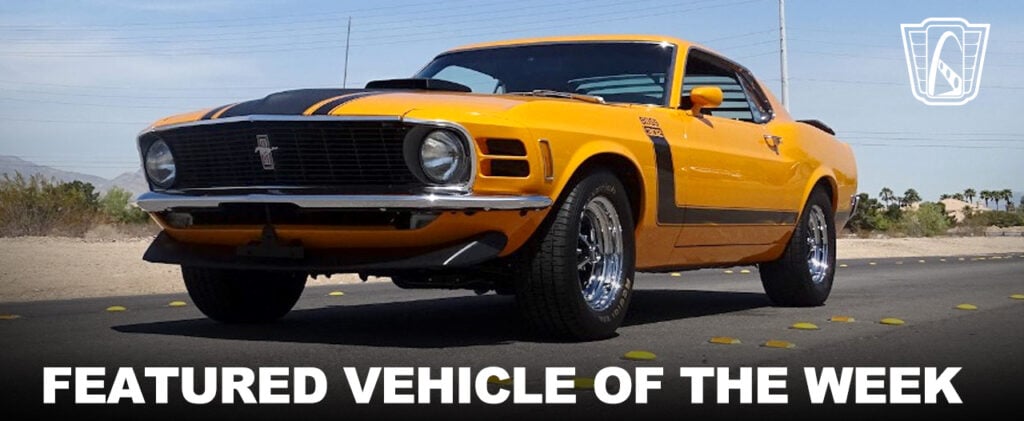
Kimberly V. Althage – June 10, 2022
Those who are familiar with the Mustang’s history are aware of the impressive performance of the Boss 302. Is it an engine, or is it a car? It’s both. This high-performance ‘Stang vehicle is named for the most powerful factory 5.0L engine ever offered (until 2011).
1966 was the dawn of the pony car era and ushered in The Sports Car Club of America (SCCA) Trans-American championship’s inaugural season. The racing series quickly became incredibly popular. Ford raced and won in those initial 1966 and 1967 seasons with the help of Carroll Shelby and his Shelby-American company. Yet, by 1968 Carroll Shelby wanted to pursue other projects outside of high-performance cars, leaving Ford without a track-focused pony car.
The 1968 season was a dismal year for Mustang. Chevy’s revised Z28 Camaro won the series championship (winning ten out of the thirteen races). The philosophy of ‘Win on Sunday, sell on Monday’ meant success at the racetrack was integral to success in the showroom. Ford Motor Company went back to the drawing board. The Boss 302 (Hi-Po) engine was created in 1968 with the sole purpose of winning the coveted SCCA’s 1969 Trans-Am Championship.
Ford engineers threw everything they could into development of what became the Boss 302 V8. Ford Motor Company had two uniquely different small block V8s during the first generation of the Mustang. Each named after the plants that manufactured them. “Cleveland” engines had an improved crankshaft, and they were equipped with cylinder heads that encouraged better flow, these engines were associated with higher-performance functions. While “Windsor” engines did not use a block-incorporated timing chain which made them easier to work on and significantly lighter.
Bill Barr and some fellow engineers decided to place Cleveland heads on the Tunnel-Port block. The results tested well enough to proceed, which led to the crossbreed between the Windsor (manufactured in 1962) and the Cleveland (still in development and debuted in 1970). These engineers used the best from both engines. The lighter Windsor block in combination with Cleveland cylinder heads improved breathing and together created one of the best-known engines in the automotive world. One that was truly “economical” for it was designed with Federal emission regulations in mind.
The new G-Code engine wasn’t the only big news concerning the creation of the Boss 302 Mustang. When Bunkie Knudsen became president of Ford in 1968, he then recruited Larry Shinoda, an already legendary design genius. Shinoda by then had left his fingerprints on the Corvair Super Spyder (1962), Corvette Sting Ray (1963), Mako Shark I & Mako Shark II (1965), and the Chevrolet Astro I (1967) & Chevrolet Astro II (1968).
Shinoda’s first project at Ford was Mustang’s challenge to the Camaro Z/28, dubbed SR-2 at the time. His involvement was just in time, for he prevented a disaster. Shinoda realized the excessive chrome, big rocker moldings, and fake exhaust outlets would not appeal to the younger demographic Mustang needed.
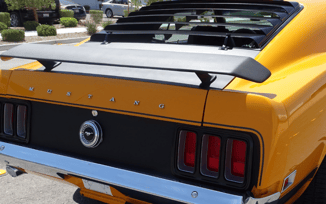
“One of the first things I did on coming to Ford was straighten out the Boss 302. They were going to call it the SR2. They had all this chrome on it. They were going to hang big cladding on the side, big rocker moldings. It was going to be more garish than the Mach 1. They had a big grille across the back and a great big gas cap and fake cast exhaust outlets and big hood pins and a really big side scoop. I took all that off, went to the C-stripe decal and painted out the hood, did the rear spoiler and the window shades and front airdam.”
Larry Shinoda, Consumer Guide interview
Shinoda had a vision in mind. The SCCA required any car on the track be available to the public consumer. He wanted a street machine that ran and performed like a race car, so he designed the car to fit around the engine. He gave the Mustang its lowered stance, improved aerodynamics, and its race-inspired aesthetic. If not for the homologation guidelines and Shinoda influence, the Boss 302 Mustang would never exist.
In fact, Larry Shinoda also gave the Boss 302 its name. The project was kept top secret and initially known as the 302 HO or 302-4V HO program. When anyone asked Shinoda what he was working on, he would quip, “the Boss’s car” and it stuck. The “Boss” was in homage to Bunkie Knudsen, the newer President of Ford who recruited him and who was an outspoken proponent of the car’s development. Bunkie Knudsen told his designers, “I want to design a car that’s the coolest Mustang out there. I don’t want somebody else’s name on it, like a Shelby.”
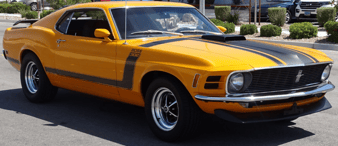
The Boss 302 V8 quickly proved its worth. It was capable of 290 hp and could send the car from 0 to 60 mph in 6.9 seconds, with a 1/4-mile time of 14.6 seconds, and a top speed of 137 mph. Although the Boss 302 Mustang came close it did not win the Trans-Am title for 1969 series due to a couple of reasons. The first were the tires, Ford used Firestone brand tires in 1969, which gave them trouble, so they switched to Goodyear.
The other issue was slow pit stops. When Ford compared pit stop times between Mustangs and Camaros, it was discovered Chevrolet’s racing team manager, Roger Penske was a magician and choreographed their pit stops to perfection. Lessons were learned and the Boss 302 became a Camaro-killer winning six races and finishing second three times. The Boss 302 was more powerful and outperformed the Camaro Z28 reclaiming the Trans-am title with Parnelli Jones at the wheel.
The Boss 302 Mustang successfully accomplished its purpose. It was created as a retaliation to the Chevrolet Camaro Z28’s win in the SCCA’s 1968 Trans-Am Championship and entered the history books as the circuit’s champion for the 1970 series. Sadly, Ford executives discontinued the Boss 302 for the 1971 model year, replacing it with a 351 version. Then decades later in 2012 Ford released a new line of Boss 302 Mustangs influenced by their earlier forefathers.
Larry Shinoda’s vision of a street machine that ran and performed like a race car had become a reality. The Boss 302 is the best-handling car Ford has ever built. They are seen by many as the incarnation of performance in the early years of American muscle. Its light overall build and smaller size enabled it to carve corners, unlike its more robust Boss 429 sibling which was a drag monster.
The Boss 302 was the coolest high-performance variant of the original Mustang. The limited production of this high-performance model has a special place in the hearts of car lovers and remains one of the most valuable possessions a car collector can own. If you would like to learn more about this 1970 Boss 302, please contact our team in the Las Vegas Showroom.
Gateway Classic Cars sells and consigns hundreds of vehicles each month. Do you have a classic car for sale with a story to tell? We’d love to hear about it, please email us at news@gatewayclassiccars.com to share it.

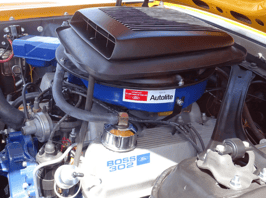
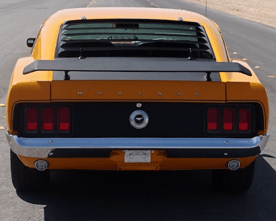

Comments